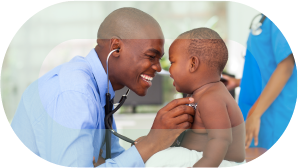Brown-Séquard Syndrome
What is Brown-Séquard Syndrome?
Brown-Séquard Syndrome (BSS) is a rare neurological condition caused by damage to one side of the spinal cord, leading to a distinct pattern of motor and sensory impairments. It is named after Charles-Édouard Brown-Séquard, the neurologist who first described it in the 19th century. This condition results in weakness or paralysis (hemiparesis) on the same side of the body as the injury and a loss of pain and temperature sensation on the opposite side. BSS is considered an incomplete spinal cord injury and can be caused by trauma, tumors, or other conditions affecting the spinal cord. People who experience BSS may maintain function and sensation in the body below the site of the spinal cord injury.
Synonyms
- Spinal hemiparesis
- Hemicord syndrome
Brown-Séquard Syndrome (BSS) is a rare neurological condition caused by damage to one side of the spinal cord, leading to a distinct pattern of motor and sensory impairments. It is named after Charles-Édouard Brown-Séquard, the neurologist who first described it in the 19th century. This condition results in weakness or paralysis (hemiparesis) on the same side of the body as the injury and a loss of pain and temperature sensation on the opposite side. BSS is considered an incomplete spinal cord injury and can be caused by trauma, tumors, or other conditions affecting the spinal cord. People who experience BSS may maintain function and sensation in the body below the site of the spinal cord injury.
BSS is rare, accounting for approximately 1–4% of all traumatic spinal cord injuries. It affects males and females equally and can occur at any age. Because it is often associated with penetrating injuries, it is more commonly reported in cases of trauma, such as stab wounds or gunshot injuries.
| Name | Abbreviation |
|---|---|
| Spinal hemiparesis | |
| Hemicord syndrome |
BSS is caused by unilateral (one-sided) damage to the spinal cord, most commonly in the cervical (upper portion of the spine in the neck) or thoracic (middle section of the spine, below the neck and above the lumbar/lower back) regions. Causes can be divided mainly into those resulting from traumatic injury (external factors) and nontraumatic injuries (such as tumors or infections). A detailed account of factors include:
-
Trauma: Stab wounds, gunshot injuries, or severe fractures of the spine.
-
Tumors: Spinal cord tumors or metastatic cancers compressing one side of the cord.
-
Infections: Conditions such as tuberculosis, herpes zoster (shingles), or syphilis affecting the spinal cord.
-
Multiple Sclerosis: Autoimmune demyelination (when the body’s immune system attacks the myelin sheath surrounding nerve cells) can sometimes mimic BSS.
-
Vascular Issues: Spinal cord infarction (stroke) affecting one side.
-
Congenital Conditions: Rare spinal malformations occurring at birth leading to unilateral cord damage.
The hallmark of BSS is the characteristic hemicord syndrome, the result of damage to a portion of one half of the spine which presents as:
-
Ipsilateral (Same Side) Motor Deficits: Weakness or paralysis below the level of injury due to corticospinal tract damage.
-
Ipsilateral Loss of Proprioception and Vibration Sense: Impaired ability to perceive body position and vibrations due to dorsal column involvement.
-
Contralateral (Opposite Side) Loss of Pain and Temperature Sensation: Damage to the spinothalamic tract causes loss of pain and temperature perception on the opposite side of the injury.
-
Bladder and Bowel Dysfunction: In severe cases, difficulty controlling urination or bowel movements.
Diagnosis is based on a thorough neurological examination and imaging studies to confirm spinal cord damage. The distinct pattern of motor and sensory loss is a key diagnostic feature.
-
Magnetic Resonance Imaging (MRI): The preferred imaging test to visualize spinal cord injury, tumors, or demyelination.
-
Computed Tomography (CT) Scan: Helps assess fractures or spinal trauma when MRI is unavailable.
-
Electromyography (EMG) and Nerve Conduction Studies: Evaluate nerve function and distinguish between spinal cord and peripheral nerve injuries.
-
Spinal Tap (Lumbar Puncture): In cases of suspected infection or inflammation affecting the spinal cord.
Treatment for BSS focuses on addressing the underlying cause and managing symptoms:
-
Surgical Intervention: Required for cases due to trauma, tumors, or spinal compression.
-
Corticosteroids: Used in cases of spinal inflammation or multiple sclerosis to reduce swelling and nerve damage.
-
Physical and Occupational Therapy: Essential for improving mobility, strength, and function.
-
Pain Management: Medications such as NSAIDs, neuropathic pain drugs (gabapentin, pregabalin), or muscle relaxants.
-
Rehabilitation Programs: Assist with adapting to motor and sensory impairments, including gait training and assistive devices.
The prognosis for BSS varies depending on the severity and cause of the spinal cord injury. With early intervention and rehabilitation, many individuals experience partial or significant recovery, particularly in cases of trauma. However, long-term deficits, including muscle weakness and sensory loss, may persist. The extent of recovery depends on the degree of initial spinal cord damage and the effectiveness of treatment.
Last updated 2 Feb 2009, 06:50 PM
2 Feb 2009, 06:50 PM
I am a female diagnosed with Brown-Sequard Syndrome.This happened after surgery for a badly herniated c5/c6 disc. After the surgery which involved Discectmy,Fusion and PlatingI found I had no use of my Left hand and could not stand properly or take any weight on my left leg.After a week I was sent to a rehab Unit and with intensive therapy was able to get some movement in my fingers and walk with the aid of a walking frame. After discharge I attended Outpatients Rehab for another two months. I had not yet realised the other symptoms as yet until I walked on the cold tiles on morning without my slippers then I noticed that my left foot felt the cold but the right was normal body heat. I tested this again in the shower as I had not thought too much about it til then and found my leg going red under the hot water but it only felt warm. I also at this stage bumped my leg and felt no pain thought that was strange so deliberately hit myself again no pain, I talked to them at Rehab and they sent me straight in to my specialist and he explained the new diagnosis. I had often wondered why I had not felt any pain on my Right hip where they had taken the Bone Graft from as I had been told this would be the most painful site. There has been some down time mostly due to frustration at not being able to do all the things I could before. If theres others with this complaint let me know.
Clinical Trials
CoRDS, or the Coordination of Rare Diseases at Sanford, is based at Sanford Research in Sioux Falls, South Dakota. It provides researchers with a centralized, international patient registry for all rare diseases. This program allows patients and researchers to connect as easily as possible to help advance treatments and cures for rare diseases. The CoRDS team works with patient advocacy groups, individuals and researchers to help in the advancement of research in over 7,000 rare diseases. The registry is free for patients to enroll and researchers to access.
Enrolling is easy.
- Complete the screening form.
- Review the informed consent.
- Answer the permission and data sharing questions.
After these steps, the enrollment process is complete. All other questions are voluntary. However, these questions are important to patients and their families to create awareness as well as to researchers to study rare diseases. This is why we ask our participants to update their information annually or anytime changes to their information occur.
Researchers can contact CoRDS to determine if the registry contains participants with the rare disease they are researching. If the researcher determines there is a sufficient number of participants or data on the rare disease of interest within the registry, the researcher can apply for access. Upon approval from the CoRDS Scientific Advisory Board, CoRDS staff will reach out to participants on behalf of the researcher. It is then up to the participant to determine if they would like to join the study.
Visit sanfordresearch.org/CoRDS to enroll.
Community Leaders
Expert Questions
Ask a question
Community User List
Start a Community
Don't See Your Condition On Rareshare?
Start your own! With a worldwide network of 8,000 users, you won't be the only member of your community for long.
FAQ
Have questions about rareshare?
Visit our Frequently Asked Questions page to find the answers to some of the most commonly asked questions.
Discussion Forum
Brown-Sequard Syndrome
Created by Mac1946 | Last updated 2 Feb 2009, 06:50 PM

Our Communities
Join Rareshare to meet other people that have been touched by rare diseases. Learn, engage, and grow with our communities.
FIND YOUR COMMUNITY
Our Resources
Our rare disease resources include e-books and podcasts

Our Community Leaders
Community leaders are active users that have been touched by the rare disease that they are a part of. Not only are they there to help facilitate conversations and provide new information that is relevant for the group, but they are there for you and to let you know you have a support system on Rareshare.
